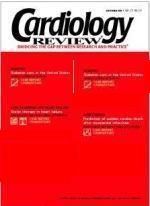Publication
Article
Cardiology Review® Online
Hypertension workshop revisits JNC 7
One year after the release of national guidelines for the treatment of hypertension, their usefulness is still being called into question. As part of a hypertension workshop sponsored by Novartis Pharmaceuticals, experts gathered to discuss the state of hypertension management and how well the guidelines of the Seventh Report of the Joint National Committee on Prevention, Detection, Evaluation, and Treatment of High Blood Pressure (JNC 7) have served the clinician.
Michael Alderman, MD, professor of medicine, epidemiology, and public health at Albert Einstein College of Medicine, Bronx, New York, gave the JNC 7 report a grade of B—. On the positive side, JNC 7 has encouraged patients and physicians to “pay attention” to hypertension; highlighted the risk of uncontrolled blood pressure (every 20/10-mm Hg increase doubles the risk of heart disease); advocated early aggressive treatment, especially for patients with diabetes and kidney disease; and acknowledged that most patients will require combination therapy for control of their blood pressure.
On the downside, the adoption of a “prehypertension” category with inadequate attention to global cardiovascular risk has created confusion among patients and physicians, claimed Dr. Alderman. Blood pressure goals were not established for patients defined as prehypertensive, he said, and management options after lifestyle modifications, including medications, were ill defined. In addition, he believes the “diuretic first” message of JNC 7 emphasized demographic over individualized medicine. “In a general way, beginning therapy with a diuretic is probably as good a choice as any other, knowing nothing else about those patients, but I would argue that we would need to know a lot more about our patients so we can make more informed and precise choices.”
Target organ protection is the bottom line in the treatment of hypertension, and several clinical trials have shown that different agents provide protection to the heart, brain, and kidneys. “For example, in diabetic renal disease, it is clear that blockade of the renin-angiotensin system with angiotensin receptor blockers (ARBs) or angiotensin-converting enzyme (ACE) inhibitors is a superior strategy,” said Dr. Alderman. “We have to use agents appropriately to best accomplish target organ protection.”
The need for target organ protection was echoed by Kenneth A. Jamerson, MD, professor of internal medicine, University of Michigan, Ann Arbor. Major complications of hypertension include kidney damage and stroke. “The primary purpose of hypertension treatment is to prevent these debilitating and life-threatening complications,” he said.
Data from the Heart Outcomes Protection Evaluation and the African American Study of Kidney Disease and Hypertension indicate that ACE inhibitors prevent damage to kidneys and other target organs, said Dr. Jamerson. The ARBs may also afford such protection; studies have indicated that ARBs slow progression of kidney disease and reduce the risk of major cardiovascular end points.
Richard B. Devereux, MD, professor of medicine, Cornell University, New York, made a case for the use of combination antihypertensive therapy, noting that more than two drugs are usually needed to get patients to goal blood pressure levels. Blood pressure lowering is additive when drugs with different mechanisms of action are used in combination, which can help to optimize control of blood pressure. Antihypertensive agents can be considered neurohumoral (ACE inhibitors, ARBs, beta blockers, and other sympatholytics), sodium-volume agents (diuretics and calcium antagonists), and others (alpha blockers and direct vasodilators).
Most clinical trials comparing antihypertensive agents have actually been trials of combination therapy because additional agents have been allowed in an attempt to achieve blood pressure control. Although the Antihypertensive and Lipid lowering treatment to prevent Heart Attack Trial (ALLHAT) involved add-on drugs to the principal therapies being compared, it did not fully address the use of combinations, in part because one of the regimens studied, a beta blocker as add-on therapy to an ACE inhibitor, “would be predicted to have subadditive effects on blood pressure because they are in the same general class of antihypertensive agents,” said Dr. Devereux. Thus, blood pressure control was less than optimal in the ACE inhibitor arm of ALLHAT.
Combination therapy is already the norm, but with separate pills, he said. Clinical trials in progress are comparing fixed-dose combinations for the prevention of cardiovascular end points, he indicated.
In the treatment of African Americans with hypertension, JNC 7 varies from guidelines from the International Society on Hypertension in Blacks (ISHIB), which do not advocate specific drug therapy but consider a beta blocker/diuretic, ACE inhibitor/diuretic, ACE inhibitor/calcium antagonist, and an ARB/diuretic as appropriate when combination therapy is needed, said Elizabeth Ofili, MD, MPH, professor of medicine at Morehouse School of Medicine, Atlanta. The ISHIB recommendations, therefore, can be used to guide physicians in individualizing treatment for African Americans, she said.
In the real world, the best approach is a patient-centered one in which assessment is individualized and treatment is tailored to the patient, said Thomas Giles, MD, professor of medicine, Louisiana State University, New Orleans. A team approach using physicians, community health workers, and nurse practitioners often improves treatment compliance and blood pressure reduction, he said.






